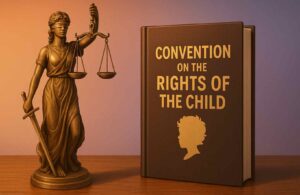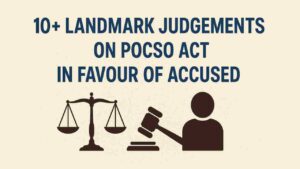Kelsen’s Pure Theory of Law defines law as a hierarchy of norms, each deriving validity from a higher norm, ending in a basic norm (Grundnorm). It separates law from morality and politics, aiming to create a scientifically pure, value-free understanding of legal systems.
Hans Kelsen’s Pure Theory of Law stands as one of the most influential and ambitious efforts to define the nature of law with scientific precision. First introduced in the early 20th century, the theory attempts to explain what law is, without relying on external influences like morality, politics, or social functions.
Kelsen sought to create a framework that analyzes law purely on its terms, as a system of norms, without bringing in value judgments or sociological considerations. His goal was to make legal theory “pure” in the same sense that Kant made metaphysics rigorous: by clearly separating facts from norms, and empirical observations from normative prescriptions.
So, what is the Pure Theory of Law? At its core, it is a theory that views law not as a product of divine command, moral reasoning, or social custom, but as a structured hierarchy of norms. These norms are “legal” because they are created according to specific rules within a legal system.
Law, for Kelsen, is a system of norms that prescribe behavior through statements like “you ought to pay taxes” or “judges must impose penalties for theft.” These are not empirical statements; they do not describe what is or what will happen. Rather, they prescribe what ought to happen under given conditions.

The Pure Theory treats law as a self-contained normative order, where each rule’s validity depends on its relation to a higher rule in a chain that ultimately leads to a foundational assumption, the Grundnorm, or basic norm.
This leads to the second question: why is it called “pure”? Kelsen used the term “pure” to emphasize that his theory excludes everything that is not strictly legal. He believed that legal science had been distorted by moral philosophy, political ideology, and even psychology.
For example, traditional natural law theorists argued that a law must be just or moral to be valid. Kelsen rejected this. For him, justice is a matter of ethics, not law. Similarly, he rejected the view that law is merely the command of a sovereign backed by threat, as proposed by Austin. That, too, introduced psychological and empirical elements into what should be a normative structure.
Kelsen argued that if legal theory is to be a science, it must describe law in a way that is general, objective, and free from subjective values. The “purity” of the theory, then, is its strength: it offers a universal, abstract method to analyze any legal system, regardless of its moral quality or political structure, by examining how its norms are produced, structured, and validated. In this way, Kelsen attempted to transform legal theory into a discipline as exact and neutral as logic or mathematics.
Ultimately, the Pure Theory of Law is “pure” because it isolates the legal from the non-legal, focusing solely on law’s internal logic, its normativity, and its hierarchical structure, laying a foundation for modern legal positivism and influencing generations of jurists and constitutional theorists.
Historical Background and Influences of Pure Theory of Law
To fully understand Hans Kelsen’s Pure Theory of Law, it’s essential to explore the historical and intellectual environment that shaped it. Kelsen developed his theory during a period of immense upheaval in Europe, both politically and philosophically. Born in 1881 in Prague, then part of the Austro-Hungarian Empire, Kelsen witnessed the decline of monarchies, the rise of democratic constitutions, and the devastation of two world wars. These events deeply influenced his search for a legal theory that could bring order, stability, and neutrality to a chaotic world.
One of the major philosophical influences on Kelsen was Immanuel Kant. Kant’s idea of separating “what is” (empirical facts) from “what ought to be” (normative statements) left a profound mark on Kelsen’s thinking. Like Kant, Kelsen believed that human understanding imposes structure onto reality. He applied this method to law, arguing that law is not just about observable actions but about the normative meaning we attach to those actions.
For example, when a parliament passes a law, it’s not just physical activity, speeches, votes, and signatures, but the legal meaning of those actions that creates a new norm. This insistence on law as a system of meaning rather than brute fact formed the cornerstone of Kelsen’s theory.
Another influence came from the decline of classical legal positivism, particularly the theory of John Austin, who defined law as the command of a sovereign backed by threats. Kelsen rejected this view as overly simplistic and “impure,” arguing that it reduced law to a psychological or sociological phenomenon and ignored its normative nature. Law, in Kelsen’s view, was not about commands or power relations; it was about norms that prescribe behavior within a structured legal order.
Kelsen was also influenced by legal formalism and neo-Kantianism, both of which were popular in early 20th-century European academia. These schools emphasized the need for a scientific, analytical approach to law, free from political or emotional bias. Kelsen took this further by proposing that legal science must focus exclusively on the internal logic of legal systems, how rules are created, validated, and linked together, rather than on their moral content or social effects.
Kelsen’s real-world experience also shaped his theory. He was the principal author of the Austrian Constitution of 1920 and later served as a judge on the Austrian Constitutional Court. These roles gave him firsthand insight into how legal systems function at the highest levels. His work in creating and interpreting constitutional norms solidified his belief that validity in law stems not from power or morality, but from adherence to an internally structured hierarchy of norms.
Finally, Kelsen’s theory emerged at a time when Europe was grappling with the collapse of traditional empires and the rise of new nation-states. Legal systems were being rebuilt from the ground up. In this environment, Kelsen’s model of a value-neutral, hierarchical, and coherent legal system offered a way to think about law that was both rigorous and adaptable to any political order.
Core Principles of the Pure Theory
Hans Kelsen’s Pure Theory of Law is built on a tightly structured set of concepts. At its foundation lies a vision of law as a normative system, completely separate from morality, politics, or sociology. These principles form the theoretical backbone of his framework and help distinguish it from other legal theories.

#1 The Basic Norm (Grundnorm)
At the top of Kelsen’s legal structure is the Grundnorm, or basic norm. This is a hypothetical presupposition that validates the entire legal system. It is not enacted by any legal authority nor written in any statute. Rather, it is assumed to exist so that the constitution and all laws beneath it can be considered valid. For example, in a constitutional democracy, the Grundnorm might be understood as “The constitution shall be obeyed.” This basic norm gives coherence to the legal system by serving as the ultimate source of validity for all subordinate norms.
The Grundnorm is not subject to proof or disproof. Its purpose is methodological, it allows legal scientists to trace the validity of any legal rule back through a chain of authority. Without this foundational assumption, the legal system would collapse into a set of disconnected directives.
#2 Hierarchy of Norms
Kelsen envisioned the legal system as a hierarchy where each legal norm derives its authority from a higher norm. This pyramid starts with specific rules, such as traffic laws or tax codes, which draw their authority from statutes. Statutes, in turn, are valid because they follow the procedures set out in the constitution. At the very top is the Grundnorm, which serves as the logical foundation.
This vertical structure ensures consistency and order. It also enables jurists to assess the validity of a law not by its moral worth but by checking whether it was created according to the rules of the system.
#3 Separation of Law and Morality
A central tenet of the Pure Theory is the strict separation of law and morality. Kelsen argued that law should be studied independently of ethical judgments. A legal rule is valid if it is created according to proper procedures, even if it is unjust or immoral. This perspective opposes the natural law tradition, which holds that unjust laws are not true laws at all.
For Kelsen, mixing legal analysis with moral or political views would contaminate the purity of legal science. The task of the jurist is not to evaluate laws based on justice but to describe their structure and function within a legal system.
#4 Normativity over Causality
Kelsen emphasized that legal rules are norms, not causal descriptions. In other words, they prescribe behavior rather than describe events. A law does not say, “People do not steal”; it says, “People ought not to steal.” This prescriptive nature sets law apart from empirical sciences, which describe what happens in the world.
This distinction mirrors Kant’s idea of separating “is” from “ought.” Legal science, for Kelsen, is the science of the “ought,” focused on what should be done according to valid norms, not what people actually do.
#5 Purity and Scientific Neutrality
The purity in Kelsen’s theory refers to its effort to isolate legal analysis from all other disciplines. Law is not politics, morality, or sociology. Legal theory must avoid ideological biases and focus solely on identifying and analyzing legal norms. Kelsen believed that only by doing so could legal science achieve true objectivity.
This insistence on methodological purity allows the theory to be applied across legal systems regardless of their political orientation or moral values. Whether dealing with a democracy or a dictatorship, the Pure Theory asks only whether a norm is legally valid, not whether it is ethically right.
The Structure of a Legal System According to Kelsen
In Hans Kelsen’s Pure Theory, law is not a random collection of rules or judicial practices. It is an organized, logical structure governed by principles of normativity and hierarchy. His model presents the legal system as a coherent and closed system of norms, each deriving its authority from a higher one. This structural approach is central to understanding how legal systems function and maintain internal consistency.
Law as a Normative Order
Kelsen begins with the premise that law is a system of norms, not of actions or facts. A norm, in this context, is a statement that prescribes behavior: it tells someone what they ought to do or refrain from doing. Legal systems are composed entirely of such norms. For example, “You must file your taxes by April 15” is not a statement of fact but a norm that imposes a duty.
Importantly, Kelsen emphasized that legal norms are not individual or isolated rules. They form part of a unified structure, where each norm’s authority and function are determined by its position within the system.
The Normative Pyramid
To visualize a legal system, Kelsen proposed a hierarchical model, often described as a pyramid. At the base of the pyramid are specific legal rules, penal codes, administrative regulations, and civil procedure rules that guide daily conduct. These derive their authority from legislative statutes. The statutes themselves must comply with a constitution or foundational legal document.
At the apex of this hierarchy is the Grundnorm, the basic norm that provides legitimacy to the constitution and, by extension, to every rule beneath it. Each level of the pyramid depends on the norm above it for validity. This “normative chain” ensures that no legal rule can stand unless it can be traced back to an accepted legal source.
Creation and Delegation of Norms
A key feature of Kelsen’s structure is the idea that norms are created through authorized procedures. A lower-level body can only make valid law if it is empowered by a higher-level norm. For example, a city council can pass traffic ordinances only because national or state law grants it that authority.
This delegation of legal competence maintains order and prevents arbitrary rule-making. Each level of the system is accountable to the one above it, and any rule made without proper authority is considered invalid.
Static and Dynamic Legal Systems
Kelsen also distinguishes between two aspects of legal order: static and dynamic. In a static system, the content of norms is fixed and derived from logical deduction. In a dynamic system, norms change over time through specific procedures, such as legislation or constitutional amendment.
Modern legal systems are dynamic, and Kelsen’s theory accommodates this by allowing the legal order to evolve through legally defined methods. What remains constant is the structural logic of the system and the presupposition of a foundational norm.
Unity and Coherence
One of Kelsen’s major contributions is his insistence on the internal unity of a legal system. Because every norm is derived from a higher one, the system operates as a whole. There are no legal rules that stand independently of this hierarchy. Conflicts between norms are resolved within the structure by identifying which rule has greater authority.
This systemic coherence distinguishes a legal order from a random collection of edicts. It ensures that even complex bodies of law can be analyzed logically and systematically.
Comparison with Other Legal Theories
Hans Kelsen’s Pure Theory of Law did not emerge in a vacuum. It was both a reaction to earlier legal theories and a significant influence on those that came after. To fully grasp its impact, it is important to compare it with other dominant legal traditions such as Natural Law, H.L.A. Hart’s version of legal positivism, and the American Legal Realist movement. These comparisons help illustrate Kelsen’s distinct approach to legal theory and highlight its strengths and limitations.
Natural Law Theory
Natural law theory holds that law must be grounded in morality. According to thinkers like Thomas Aquinas and later John Finnis, a law that contradicts moral principles is not a true law. In this tradition, moral legitimacy is a prerequisite for legal validity.
Kelsen directly opposed this view. He believed that tying law to morality introduces subjectivity into legal science. For Kelsen, a law is valid if it is created by the rules of the legal system, regardless of its ethical content. He did not deny the importance of moral questions in human life but insisted that they fall outside the scope of legal analysis. In his view, combining law with morality contaminates the objectivity required for a pure legal theory.
H.L.A. Hart’s Legal Positivism
While Kelsen and Hart are both considered legal positivists, they differ significantly in their approaches. Hart introduced the concept of the “rule of recognition,” a social rule that legal officials accept as providing the criteria for legal validity. This rule of recognition is not hypothetical like Kelsen’s Grundnorm; it is based on the actual practices of legal institutions.
Hart also emphasized the “internal point of view,” recognizing that legal rules are not just obeyed out of fear but are accepted by officials as standards of behavior. This makes Hart’s theory more sociologically grounded. Kelsen’s theory, by contrast, deliberately excludes sociological and psychological considerations. He focused purely on the formal structure of the law and how norms derive their validity within a system.
Additionally, Hart criticized Kelsen’s concept of the Grundnorm for being too abstract and unnecessary. He argued that legal validity could be explained through social rules without requiring a presupposed foundational norm.
American Legal Realism
The American Legal Realists, such as Karl Llewellyn and Jerome Frank, were skeptical of abstract legal theories. They emphasized that what actually happens in courts is more important than what laws say in theory. For them, the behavior of judges and the realities of legal decision-making were central to understanding law.
Kelsen rejected this approach, claiming that it confused legal science with sociology. While realists focused on the unpredictable and practical nature of judicial decisions, Kelsen believed legal science must focus on norms and their logical structure. For him, law is not what judges do but what the legal system prescribes as valid norms.
Realists viewed law as fluid and shaped by political and social influences. Kelsen viewed law as a closed, normative system governed by logic and internal coherence. He was less concerned with how laws were applied in practice and more with how they were structured and validated.
Critiques by Hart, Raz, and Dworkin
While Hans Kelsen’s Pure Theory of Law has been highly influential in legal philosophy, it has also faced significant criticism. Three of the most important critiques come from H.L.A. Hart, Joseph Raz, and Ronald Dworkin. Each of these thinkers, though working within or adjacent to the tradition of legal positivism, found key flaws in Kelsen’s approach. Their objections help clarify both the value and the limitations of the Pure Theory.
H.L.A. Hart’s Critique
Hart agreed with Kelsen on the need to separate law from morality, but he challenged the abstract nature of the Grundnorm. For Hart, legal systems do not depend on a hypothetical basic norm. Instead, they rely on a real and observable social practice among legal officials. This practice involves a shared acceptance of what Hart called the rule of recognition, which serves as a standard for determining what counts as valid law in a given system.
Hart also argued that Kelsen overlooked the internal point of view. Legal officials do not merely follow rules because of external pressures; they accept those rules as legitimate standards. Kelsen’s theory, in Hart’s view, failed to explain why legal actors follow rules with a sense of obligation. By focusing solely on the logical structure of law, Kelsen ignored the lived experience of legal systems.
In addition, Hart objected to Kelsen’s focus on sanctions and coercion. While Kelsen did not define law as simply a command backed by force, Hart believed he still placed too much emphasis on punishment. Hart argued that rules often serve functions beyond coercion, such as granting rights or empowering individuals and institutions.
Joseph Raz’s Critique
Joseph Raz, another legal positivist, appreciated many elements of Kelsen’s work but questioned the necessity and coherence of the Grundnorm. Raz believed that the authority of law could be explained through the idea of social sources and institutional practices. He argued that there is no need to assume a hypothetical norm to explain why legal systems function.
Raz was also skeptical about the idea that legal systems must be entirely unified and logically consistent. He acknowledged that in the real world, legal systems contain inconsistencies and overlapping norms. Kelsen’s vision of a perfectly coherent hierarchy did not match the complexity and messiness of actual law.
Furthermore, Raz emphasized the importance of authority and the service conception of law. He believed that the law should help people better conform to reason by offering authoritative guidance. Kelsen’s model, focused on formal validity, did not address why people should treat legal norms as authoritative in their lives.
Ronald Dworkin’s Critique
Ronald Dworkin offered the most fundamental challenge to Kelsen’s separation of law and morality. Dworkin argued that legal interpretation always involves moral reasoning. Judges, when deciding hard cases, do not merely apply rules; they also rely on principles of justice, fairness, and political morality. For Dworkin, these principles are part of the law, not external to it.
He criticized legal positivists, including Kelsen, for presenting an incomplete view of what law actually is. Dworkin maintained that law is not just a system of rules validated by a hierarchy but a complex body of principles that includes moral considerations. When judges interpret the law, they are not stepping outside the legal system but engaging with its deeper values.
Dworkin also rejected the idea that law can be fully explained by focusing on its sources. He argued that the meaning and authority of legal norms depend not only on how they are created but also on how they align with moral and constitutional principles. This directly contradicted Kelsen’s insistence on excluding moral content from legal analysis.
Contemporary Relevance and Limitations of Pure Theory of Law
Even many decades after Hans Kelsen first introduced the Pure Theory of Law, his ideas continue to shape legal thinking around the world. While the theory has undergone criticism and modification, it still holds considerable relevance in academic, constitutional, and international legal contexts. At the same time, modern scholars and jurists recognize important limitations in Kelsen’s framework that affect its application in today’s complex legal environments.
Relevance in Modern Legal Systems
Kelsen’s Pure Theory remains highly influential, particularly in countries with strong civil law traditions such as Austria, Germany, and other parts of continental Europe. Courts and constitutional bodies in these jurisdictions often approach legal questions by examining the hierarchical structure of norms. Kelsen’s emphasis on legal validity, separate from morality or politics, allows for a focused analysis of whether laws have been properly enacted according to constitutional procedures.
International law is another area where Kelsen’s ideas are still applied. He was among the earliest theorists to argue that international law forms a unified legal system. Kelsen believed that a basic norm could underpin the entire global legal order, just as it does within national systems.
Today, principles of norm hierarchy, legal validity, and procedural purity continue to inform discussions about treaties, jurisdiction, and the functioning of international courts.
Kelsen’s influence also appears in discussions on constitutional review. He was a key figure behind the creation of Austria’s Constitutional Court, one of the first bodies tasked with invalidating unconstitutional laws. This model has since been adopted in many countries, including Germany, Italy, and Spain, and serves as the foundation for constitutional adjudication in numerous modern democracies.
Clarity and Methodological Discipline
One of Pure Theory’s strengths lies in its clarity. It provides a clean and logically coherent way to understand legal systems without being clouded by subjective moral or political preferences. Law students and scholars often turn to Kelsen’s model when trying to understand how legal norms are structured and validated.
The theory also promotes methodological discipline. By excluding non-legal factors from the analysis, it forces jurists to ask precise questions about the source and function of legal rules. This clarity is especially useful in constitutional interpretation, administrative law, and legal drafting.
Limitations in Practice
Despite its strengths, the Pure Theory has limitations. One of the most commonly cited issues is its abstract nature. Kelsen’s focus on formal validity often ignores the practical realities of law. Legal rules do not operate in a vacuum. They are created, applied, and interpreted by human beings who are influenced by social, moral, and political pressures.
Another criticism concerns the Grundnorm. Many scholars view it as a fictional device with no clear status in reality. If the Grundnorm is merely presupposed, critics argue, then it adds little to legal analysis. Others suggest that the idea of a foundational norm can be replaced by more observable social practices, as suggested by Hart.
The strict separation between law and morality also remains contentious. In many legal systems, moral reasoning is not only present but essential. Courts often rely on concepts like fairness, justice, and proportionality when interpreting laws. Kelsen’s model struggles to accommodate these dimensions of legal reasoning.
Furthermore, the assumption of internal unity and coherence may not reflect how real legal systems function. In practice, laws can be inconsistent, vague, or contradictory. Judicial discretion and political influences often shape outcomes in ways that cannot be explained through formal hierarchy alone.
Adaptation and Evolution of Pure Theory of Law
Some modern scholars have tried to update or modify the Pure Theory to make it more practical. These efforts involve integrating sociological insights or softening the boundary between law and morality. While these revisions move away from Kelsen’s strict purity, they attempt to preserve the theory’s core strengths while addressing its weaknesses.
Kelsen’s Legacy in Legal Philosophy
Hans Kelsen’s contribution to legal thought remains one of the most significant in the modern history of jurisprudence. His Pure Theory of Law changed how scholars and courts understand the nature and structure of legal systems. Even those who disagreed with him have acknowledged his intellectual influence. Today, his legacy extends far beyond his original writings and continues to inform debates in legal theory and practice.
Influence on Legal Positivism
Kelsen is often grouped with other legal positivists, but his version of positivism stands out for its level of precision and abstraction. His insistence that law must be studied as a system of norms, free from moral or political interference, laid the groundwork for later scholars such as H.L.A. Hart and Joseph Raz. While these thinkers modified or rejected parts of Kelsen’s approach, they built their theories by directly responding to his work.
His emphasis on legal validity based on hierarchical structure influenced how legal positivists think about authority and legal order. The idea that law gains its validity through procedural correctness rather than moral rightness continues to be a central feature of contemporary legal positivist theory.
Impact on Constitutional Law and Courts
Kelsen’s most visible and lasting impact lies in constitutional law. His design of the Austrian Constitutional Court introduced the concept of judicial review within a formal structure. This innovation gave courts the authority to invalidate laws that conflicted with the constitution, a principle that has been adopted in many legal systems across Europe and beyond.
Today, constitutional courts often follow Kelsen’s model when evaluating whether statutes conform to constitutional provisions. The method of checking legal rules against higher norms is a direct application of his hierarchical system. This has helped establish the rule of law and the principle of limited government in modern democracies.
Contribution to International Legal Theory
Kelsen also played a significant role in the development of international legal theory. He argued that international law should be viewed as a unified normative system, just like national legal systems. He proposed that a global basic norm could validate international agreements and customary practices. While this view has not been universally accepted, it continues to shape academic discussions on the nature of legal authority beyond national borders.
His work supported the idea that international law should not be treated as a loose collection of agreements but as a coherent structure capable of imposing legal obligations on states. This has implications for the functioning of institutions like the United Nations, the International Criminal Court, and the World Trade Organization.
Academic and Pedagogical Importance
In legal education, Kelsen’s Pure Theory continues to be studied as a foundational framework. It offers students a way to think about law with conceptual clarity and logical rigor. Many university curricula around the world include Kelsen’s theory as a core part of jurisprudence courses, especially in civil law traditions.
Even where scholars disagree with his conclusions, they often use his theory as a starting point for analysis. His work serves as a benchmark for evaluating other theories, whether those are grounded in morality, sociology, or economics.
Enduring Relevance
Kelsen’s legacy is not limited to academic settings. In legal practice, especially constitutional interpretation and statutory analysis, his methods still offer useful tools. His sharp distinction between validity and morality allows legal professionals to focus on the technical aspects of lawmaking and adjudication while keeping ideological arguments separate.
Although his theory has limitations, it has endured because of its clarity, coherence, and intellectual ambition. Kelsen’s influence continues to be felt across fields as diverse as legal philosophy, constitutional law, international law, and legal education.
Kelsen’s Views on International Law
Hans Kelsen’s contribution to international law is one of the most significant, yet often underemphasized, dimensions of his Pure Theory. He viewed international law not as a peripheral legal system but as the supreme normative order, foundational to understanding all other legal systems. His stance placed him squarely within the monist school of thought, which posits that international and domestic law are not separate systems but parts of a unified legal order.
Monism vs Dualism
In international legal theory, the debate between monism and dualism addresses the relationship between domestic and international law. Dualists argue that international law and municipal law function independently and must be translated into domestic statutes to be binding. In contrast, Kelsen championed monism, asserting that international law takes precedence and that state laws derive their validity from a higher international legal framework.
Kelsen’s monism was not simply about integration. It was normative and structural: he believed that just as domestic laws derive their authority from a constitution (via the Grundnorm), national constitutions themselves derive their validity from a presupposed basic norm of international law. This is a radical departure from traditional sovereignty-based views and asserts that no legal system is entirely self-validating.
The Global Grundnorm
To maintain theoretical consistency, Kelsen proposed that the Grundnorm of international law could be formulated as something like: “States ought to behave in conformity with international law.” From this foundational postulate, he argued that state constitutions, domestic legal acts, and judicial decisions gain legal authority only if they are consistent with international norms.
This global Grundnorm provides a theoretical framework for understanding state obligations, treaty compliance, and jurisdiction of international bodies. It also elevates the status of international law from mere diplomacy to genuine law, complete with normativity, validity, and enforceability, at least in principle.
Relevance to UN, WTO, and ICC Jurisprudence
Kelsen’s vision aligns closely with the post-World War II legal order, especially with the establishment of the United Nations. In fact, Kelsen was instrumental in drafting the UN Charter and was one of the earliest commentators to recognize it as a constitutional framework for international relations. The UN Charter, under Kelsen’s framework, acts as a normative apex in the international legal pyramid.
The World Trade Organization (WTO) and the International Criminal Court (ICC) further embody principles that reflect Kelsenian thinking. Both institutions derive their authority from multilateral treaties and aim to constrain state behavior through legal norms rather than mere power dynamics. The ICC’s ability to hold individuals accountable for crimes against humanity, war crimes, and genocide demonstrates how international law now asserts primacy even over sovereign acts, in line with Kelsen’s monist view.
Verdict
Hans Kelsen’s Pure Theory of Law redefined legal thinking by proposing that law is a hierarchy of norms, free from moral, political, or social influences. According to Kelsen, the validity of any legal norm depends on its derivation from a higher norm, ultimately tracing back to a foundational presupposition called the Grundnorm (basic norm). This Grundnorm is not written or enacted but is assumed to give legitimacy to a legal system, such as a constitution.
Kelsen’s Pure Theory of Law treats law as a hierarchy of norms based on a basic norm (Grundnorm), separating legal validity from morality.
Kelsen emphasized a strict separation between law and morality. In his view, a law’s validity does not depend on whether it is just or unjust, but on whether it has been created according to proper procedures within the legal system. This makes his theory a cornerstone of legal positivism, which treats law as a system of rules, not ethical principles.
Unlike natural law theorists, who believe unjust laws are not valid laws, Kelsen held that even immoral laws can be legally valid if they follow the hierarchy of norms. His vision was to create a “pure” legal science, one that studies law on its own terms without moral or empirical judgments.
Kelsen’s theory has had a lasting impact on constitutional law and international jurisprudence, particularly in systems that use judicial review or recognize a structured legal hierarchy. However, critics like H.L.A. Hart, Joseph Raz, and Ronald Dworkin have challenged its abstraction, moral detachment, and the necessity of the Grundnorm.
Frequently Asked Questions (FAQ) on Kelsen’s Pure Theory of Law
1. What is Kelsen’s Pure Theory of Law?
Kelsen’s Pure Theory of Law is a legal philosophy that defines law as a system of norms, independent of morality, politics, or sociology. It focuses purely on the legal structure and its validity through a hierarchical framework of rules.
2. What is the Grundnorm in Kelsen’s theory?
The Grundnorm, or basic norm, is a hypothetical foundational rule that validates the constitution and all subordinate laws. It is presupposed by legal theorists and not found in any statute or written law.
3. Why did Kelsen separate law from morality?
Kelsen believed that mixing law with moral judgments compromised objectivity. His theory argues that legal validity comes from proper creation within the legal system, not from a law’s moral content.
4. How is Kelsen’s theory different from Hart’s theory?
While both are legal positivists, Hart replaces Kelsen’s Grundnorm with a “rule of recognition,” a social practice accepted by legal officials. Hart emphasizes the internal point of view; Kelsen emphasizes hierarchical validity.
5. Is the Grundnorm real or hypothetical?
The Grundnorm is not a real or written rule; it is a necessary presupposition that allows jurists to interpret legal norms as valid within a system. It is a conceptual tool, not a legal fact.
6. How does Kelsen view the role of judges?
Kelsen sees judges as applying legal norms within a defined “frame” of discretion. They do not create law arbitrarily but derive authority from higher norms.
7. Is Kelsen’s Pure Theory still relevant today?
Yes, especially in constitutional law and international law. Kelsen’s emphasis on legal validity, norm hierarchy, and neutrality continues to influence constitutional courts and academic legal theory.
8. What are the main criticisms of Kelsen’s theory?
Critics argue that the theory is too abstract, ignores moral reasoning, and relies on a fictional Grundnorm. Hart, Raz, and Dworkin have all proposed more socially or morally grounded alternatives.
9. How does Kelsen’s theory apply to international law?
Kelsen proposed a monist view, where international law and national law form a unified legal system. He even suggested that international law could serve as the basis for a global Grundnorm.
10. Can unjust laws be valid under Kelsen’s theory?
Yes. Kelsen argued that even unjust laws are legally valid if they are properly enacted within a valid legal system. Moral judgment is separate from legal validity in his framework.
Glossary of Key Terms
- Grundnorm: A hypothetical foundational norm that underpins the validity of a legal system. It is not written or enacted but is assumed by jurists to validate the constitution and all subordinate laws.
- Normativity: The characteristic of legal norms that prescribe behavior through “ought” statements. Kelsen emphasized that law is normative, not descriptive, and must be analyzed in terms of obligation rather than cause and effect.
- Efficacy: The extent to which a legal system is generally obeyed and enforced in practice. For Kelsen, efficacy is a necessary condition for the continued validity of the legal order, though not of individual norms.
- Legal Positivism: A theory of law that asserts that legal validity stems from human-made rules and institutions, not from moral or theological principles. Legal positivists like Kelsen, Hart, and Austin separate law from morality.
- Rule of Recognition: H.L.A. Hart’s concept of an ultimate rule that legal officials accept as determining what counts as law. It functions as a social rule, unlike Kelsen’s hypothetical Grundnorm, and explains the foundation of legal validity in real-world systems.
- Legal Realism: A school of thought, especially prominent in the United States, which argues that law should be understood by examining how it is actually applied in practice, primarily by judges, rather than through abstract doctrines or normative systems.
- Separation of Law and Morality: A central tenet of legal positivism is that the legal validity of a rule does not depend on its moral content. Kelsen strongly defended this separation, asserting that moral evaluations should not be part of legal science.
Follow The Legal QnA For More Updates…















